Name Zayed Sultan | ||
Reign 6 August 1966 – 2 November 2004 Wives Sheikha Hassa bint Mohammed bin Khalifa Al NahyanFatima Bint Mubarak AlKetbiSheikha bint Madhad Al MashghouniFatima bint Mubarak Al KetbiMouza bint Suhail bin Awaidah Al KhailiSheikha Ayesha bint Ali Al DarmakiSheikha Amna bint Salah Buduwa Al Darmaki Spouse 'Aliaa bint Muhammad bin Salmin bin Arahmah Al Shamsy Children Khalifa bin Zayed Al Nahyan Parents Sultan bin Zayed bin Khalifa Al Nahyan, Sheikha Salma bint Butti Similar People Khalifa bin Zayed Al Nahyan, Mohammed bin Zayed Al Nahyan, Mohammed bin Rashid Al Maktou, Mansour bin Zayed Al Nahyan, Hamdan bin Zayed bin Sulta | ||
History of uae and the founding ruler hh shaikh zayed bin sultan al nahyan
Zayed bin Sultan Al Nahyan (Arabic: زايد بن سلطان آل نهيان ; 6 May 1918 – 2 November 2004) was the principal driving force behind the formation of the United Arab Emirates (UAE), the Emîr (أمير) (Ruler) of Abu Dhabi and first Ra’îs (رئيس) President of the United Arab Emirates, a post which he held for the period of almost 33 years (1971–2004).
Contents
- History of uae and the founding ruler hh shaikh zayed bin sultan al nahyan
- Sheikh mansour bin zayed bin sultan al nahyan beautiful smile poem
- Family and early life
- Career and reign
- Attitudes
- Policies and charity
- Zayed Centre
- Final years and death
- Memorials and Legacy
- Marriage and children
- References
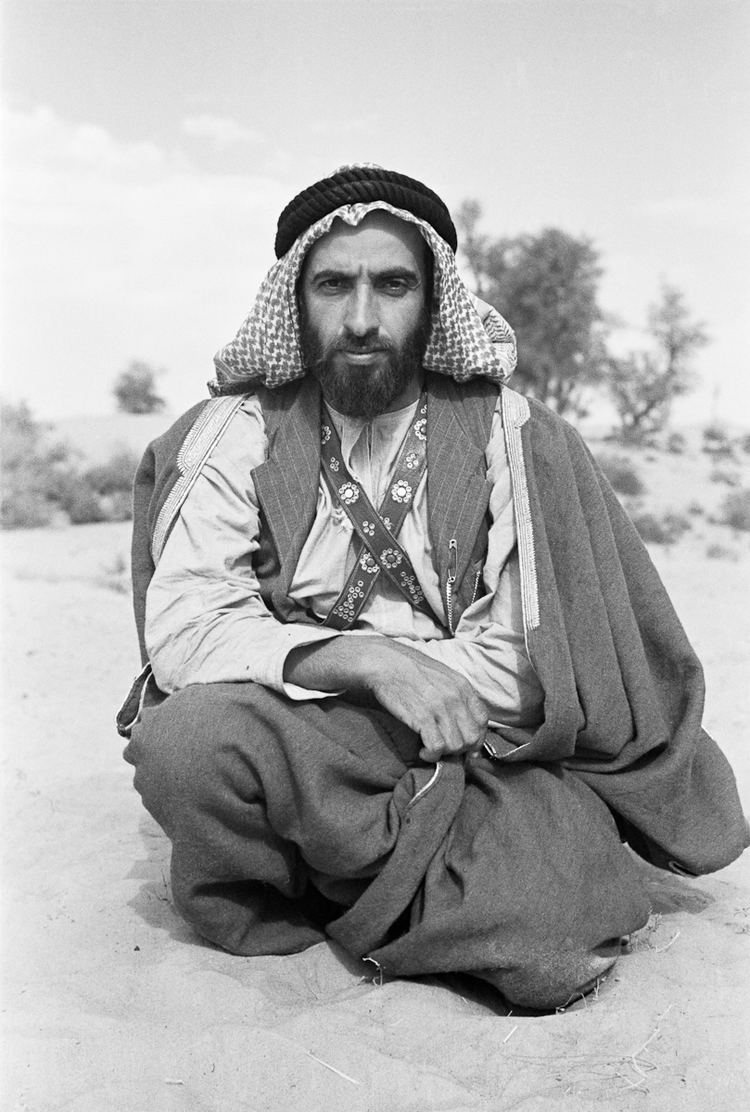
Sheikh mansour bin zayed bin sultan al nahyan beautiful smile poem
Family and early life
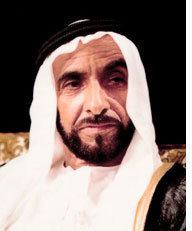
The exact date of his birth is unknown, but officially on some documents, Zayed bin Sultan Al Nahyan was born on 6 May 1918 in Abu Dhabi. He was the youngest son of Sheikh Sultan bin Zayed bin Khalifa Al Nahyan. His birth date is also reported to be 1916. His father was the ruler of Abu Dhabi from 1922 until his assassination in 1926. Zayed was the youngest of his four brothers. His mother was Sheikha Salama bint Butti Al Qubaisi. She extracted a promise from her sons not to use violence against each other, a promise which they kept. Zayed was named after his grandfather, Sheikh Zayed bin Khalifa Al Nahyan ("Zayed the Great"), who ruled the emirate from 1855 to 1909. At the time of Zayed's birth, the sheikhdom of Abu Dhabi was one of seven Trucial States along the lower coast of the Persian Gulf He also showed interest in falconry.
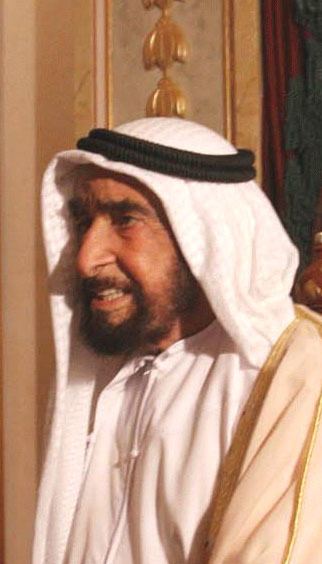
He moved to Al Ain in 1927. As Zayed was growing up, there were no modern schools anywhere along the coast. He only received a basic instruction in the principles of Islam, and lived in the desert with Bedouin tribesmen, familiarising himself with the life of the people, their traditional skills and their ability to survive under the harsh climatic conditions.
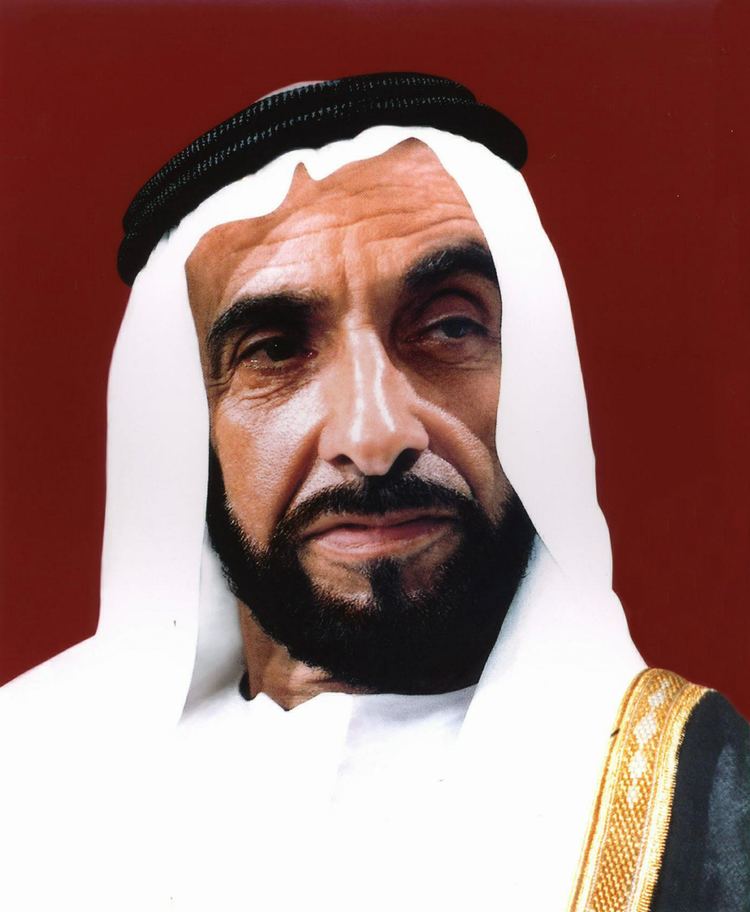
His eldest brother, Sheikh Shakhbut bin Sultan Al Nahyan, became ruler of Abu Dhabi in 1928 after their uncle, Saqr bin Zayed Al Nahyan, was also assassinated.
Career and reign
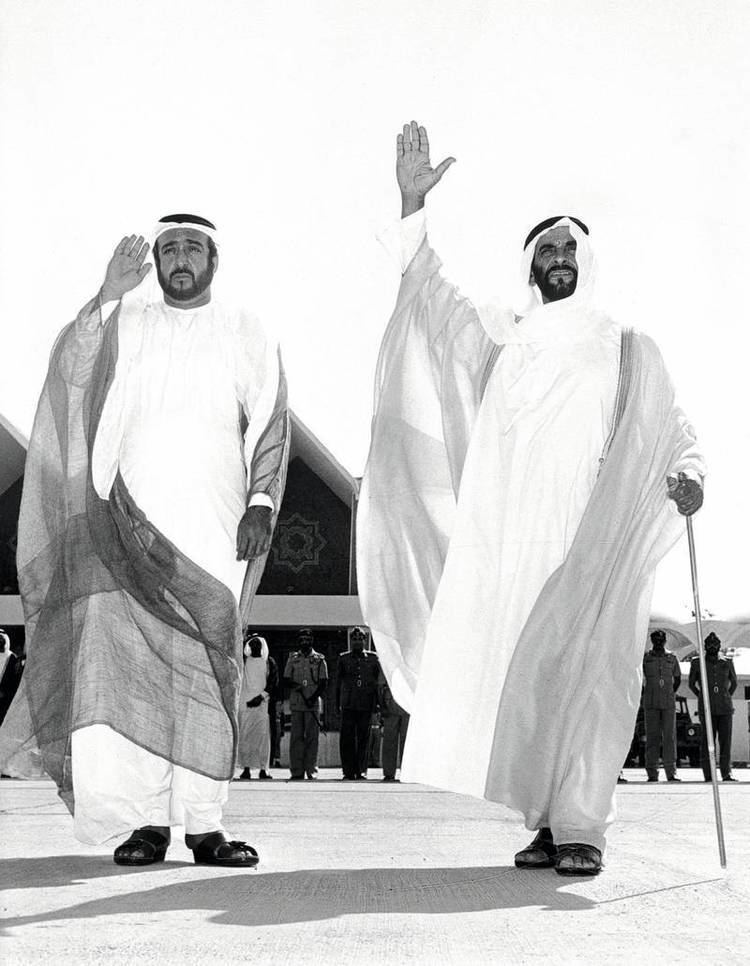
Zayed was appointed the governor of the Eastern Region of Abu Dhabi in 1946 and was based in the Muwaiji fort in Al Ain. At this time, the area was poor and prone to outbreaks of disease. When survey parties from Petroleum Development (Trucial Coast) began exploring for oil in the area, Zayed assisted them.
In 1952, a small Saudi Arabian force led by Turki bin Abdullah al-Otaishan occupied the village of Hamasa in the Buraimi Oasis (the so-called Buraimi dispute). Zayed was prominent in his opposition to Saudi territorial claims and reportedly rejected a bribe of about £30 million to allow Aramco to explore for oil in the disputed territory. As part of this dispute, Zayed and his brother Hazza attended the Buraimi arbitration tribunal in Geneva in September 1955 and gave evidence to tribunal members. When the tribunal was abandoned amid allegations of Saudi bribery, the British initiated the reoccupation of the Buraimi Oasis through a local military force, the Trucial Oman Levies. A period of stability followed during which Zayed helped to develop the region and took a particular interest in the restoration of the falaj system, a network of water channels which kept the plantations of the Buraimi Oasis irrigated and fertile.
The discovery of oil in 1958, and the start of oil exports in 1962, led to frustration among members of the ruling family about the lack of progress under Sheikh Shakhbut’s rule. On 6 August 1966, Shakhbut was deposed in a bloodless palace coup. Although it is not entirely clear from the historical record, the coup appeared to have the full backing of the Al Nahyan family and the support of the British, with the Trucial Oman Scouts providing safe transport for Sheikh Shakbut out of Abu Dhabi.
In the late 1960s, Zayed hired Dr. Katsuhiko Takahashi, a Japanese architect, to design and plan the city.
Between 8–11 January 1968, the UK's Foreign Office Minister Goronwy Roberts visited the Trucial States and announced to its shocked rulers that the United Kingdom would abrogate its treaties with them and intended to withdraw from the area. In a seminal meeting on 18 February 1968 at a desert highland on the border between Dubai and Abu Dhabi, Sheikh Zayed and Sheikh Rashid bin Saeed Al Maktoum of Dubai shook hands on the principle of founding a federation and attempting to invite other trucial rulers to join in order that a viable nation be formed in the wake of the British withdrawal.
In 1971, after occasionally difficult negotiations with the other six rulers of the Trucial States, the United Arab Emirates was formed. Zayed was appointed to the presidency of the UAE in 1971 and was reappointed on four more occasions: 1976, 1981, 1986, and 1991.
In 1974, Zayed apparently settled the outstanding border dispute with Saudi Arabia by the Treaty of Jeddah by which Saudi Arabia received the output of the Shaybah oilfield and access to the lower Persian Gulf in return for recognising the UAE.
Attitudes
Zayed was determined to unite the Emirates into federation. His calls for cooperation extended across the Persian Gulf to Iran. He advocated dialogue as the means to settle the row with Tehran over three strategic Persian Gulf islands which Iran seized from the (future) UAE Emirate of Sharjah in 1971. The islands remain in Iranian hands, despite over three decades of UAE diplomatic initiatives.
He was considered a relatively liberal ruler, and permitted private media. However, they were expected to practice self-censorship and avoid criticism of Zayed or the ruling families. Freedom of worship was permitted, and to a certain extent allowances were made for expatriate cultures, but this did not always sit comfortably in the eyes of the wider Arab world with Zayed's role as a Muslim head of state.
Zayed did not shy away from controversy when it came to expressing his opinions on current events in the Arab world. Troubled by the suffering of Iraqi civilians, he took the lead in calling for the lifting of economic sanctions on Iraq imposed by the United Nations in the aftermath of the Iraqi invasion of Kuwait in 1990, despite Kuwaiti displeasure and opposition.
Zayed was considered one of the wealthiest men in the world. A Forbes estimate put his fortune at around US$20 billion. The source of this wealth could be almost exclusively attributed to the immense oil wealth of Abu Dhabi and the Emirates, which sit on a pool of a tenth of the world's proven oil reserves. In 1988, he purchased, for £5m, Tittenhurst Park at Sunninghill, Berkshire as his English home.
Policies and charity
At the time the British withdrew from the Persian Gulf in 1971, Zayed oversaw the establishment of the Abu Dhabi Fund for Arab Economic Development; some of its oil riches were channeled to some forty less fortunate Islamic nations in Asia and Africa during the decades that followed. He is also remembered as "the man who turned the desert green," because he invested oil revenues into projects to improve the harsh desert environment.
Using the country's enormous oil revenues, Zayed built institutions such as hospitals, schools and universities and made it possible for UAE citizens to enjoy free access to them. Other charitable acts included adopting hundreds of orphans and building several hospitals abroad in Europe, Asia, and Africa.
When asked by The New York Times in April 1997 why there is no elected legislature, Zayed replied,
Why should we abandon a system that satisfies our people in order to introduce a system that seems to engender dissent and confrontation? Our system of government is based upon our religion and that is what our people want. Should they seek alternatives, we are ready to listen to them.
We have always said that our people should voice their demands openly. We are all in the same boat, and they are both the captain and the crew. Our doors are open for any opinion to be expressed, and this well known by all our citizens. It is our deep conviction that Allah has created people free, and has prescribed that each individual must enjoy freedom of choice. No one should act as if they own others.
Land was also often distributed gratis. However, while this policy benefited many landless families, enormously wealthy clans and individuals were given free land grants in proportion to their status and influence with the royal family. His majlis (a traditional Arab consultation council) was open to the public, and as well as discussing national and personal issues, he enjoyed hearing people's opinions on poetry, as well as recitals by new and young poets. He allowed non-Muslim religious buildings, such as churches and a temple, to be built. This has particularly had a positive impact on how he was publicly perceived by the vast multitudes of expatriate workers who make up approximately three quarters of the population of the UAE. Zayed was also in favour of certain rights for women, such as access to education and women's labour-rights, within traditional parameters. His views regarding women's rights were considerably more liberal than his counterparts in the GCC nations.
Zayed Centre
Controversy over the opinions of the Zayed Centre caused the Harvard Divinity School to return Sheikh Zayed's $2.5 million gift to the institution in 2000 as "tainted money." Former United States president Jimmy Carter accepted the Zayed International Prize for the Environment in 2001. The award included a monetary prize of $500,000 from the Zayed Centre, and Carter stated in his acceptance speech that the award carried extra significance to him, since it was named after his personal friend.
There was similar controversy when the London School of Economics accepted a large donation by the Zayed Centre, to build a new lecture theatre in the New Academic Building in 2008. Despite student protests, the gift was accepted with the Sheik Zayed Theatre being the second largest lecture hall on the campus.
Harvard's equivocation, the Carter controversy, and the engendering negative publicity, prompted Sheikh Zayed to shut down the centre in August 2003, stating that the Zayed Centre "had engaged in a discourse that starkly contradicted the principles of interfaith tolerance."
Final years and death
In 1999, while he was hospitalized and undergoing a series of tests, the people of the UAE wrote him a personal thank-you letter.
On 2 November 2004, Zayed died at the age of 86. He was buried in the courtyard of the new Sheikh Zayed Grand Mosque in Abu Dhabi.
His eldest son, Sheikh Khalifa bin Zayed Al Nahyan, took an increasing role in government beginning in the 1990s. Directly after his father's death, he was ratified as the Ruler of the United Arab Emirates by his fellow rulers on the Supreme Council.
Memorials and Legacy
Marriage and children
Zayed bin Sultan married seven times (two of them were sisters, Hassa and Shamsa). His children are as follows:
